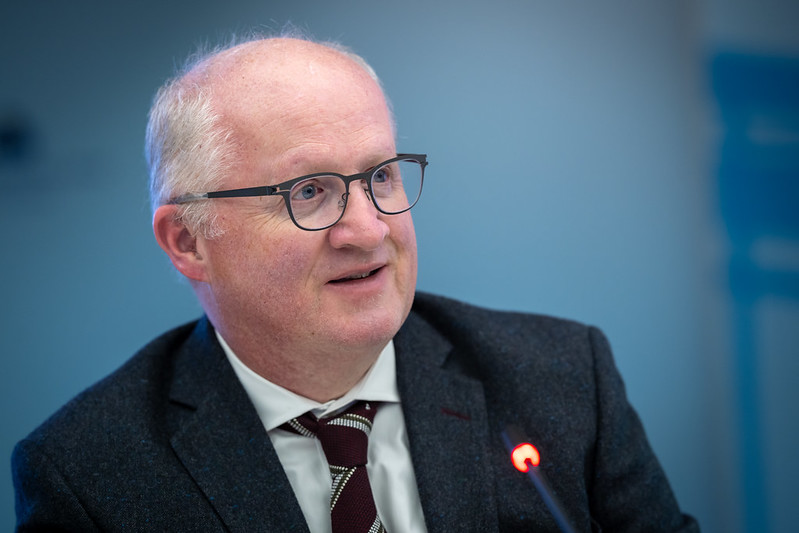ECB’s Lane: Inflation Outlook More Benign as ECB Assesses Two-Sided Risks
6 October 2025

By David Barwick – FRANKFURT (Econostream) – European Central Bank Chief Economist Philip Lane on Monday said the euro area’s inflation outlook had become “much more benign” and that monetary policy decisions would depend on how upside and downside risks to price stability evolve.
Speaking at the ECB Conference on Monetary Policy 2025 in Frankfurt, Lane said disinflation was proceeding as expected and that inflation was projected to stabilise close to 2% over the medium term.
He said the ECB’s restrictive stance had contained price pressures, while moderating wage growth and softer demand were supporting further disinflation.
Lane said non-energy inflation should edge lower before settling around target, reflecting slower compensation growth from 3.4% next year to 2.7% in 2026 and 2027.
Energy inflation was likely to remain slightly negative in 2025 and 2026 and turn positive in 2027, when the European Union’s new emissions trading system is expected to lead to a one-off price increase.
He said the projected stabilisation of inflation around target in 2026 and 2027 was conditional on maintaining a monetary policy stance consistent with that outcome. The ECB’s past rate increases had played a key role in moderating demand and damping both wage and profit growth, he said.
Turning to the policy outlook, Lane said decisions would continue to be taken on a data-dependent, meeting-by-meeting basis, with no pre-commitment to a particular rate path. The Governing Council would assess not only the central inflation outlook but also how the balance of risks evolved, he said.
“[A]n increase in the likelihood or intensity of downside risk factors would strengthen the case that a slightly lower policy rate might better protect the medium-term inflation target,” he said. “[A]lternatively, an increase in the likelihood or intensity of upside risk factors would indicate that maintaining the current policy rate would be appropriate in the near term.”
Lane said the ECB would weigh whether incoming data pointed to renewed inflationary pressure or instead confirmed the durability of disinflation. The evolving risk distribution would also matter for rate decisions, he said.
He cautioned that a stronger euro, weaker global demand or renewed volatility in financial markets could reinforce disinflation, while persistent supply constraints, higher defence and infrastructure spending or extreme weather could drive prices higher.
Lane said the risks to economic growth had also become more balanced following earlier concerns about trade fragmentation and financial instability. The ECB would remain attentive to developments in energy markets, exchange rate movements and the strength of monetary policy transmission, he said.
He added that structural forces such as geopolitics, digitalisation, artificial intelligence and demographic change would make the inflation environment more uncertain and potentially more volatile in the coming decade. These shifts would require monetary policy to remain adaptable and risk-aware, he said.
Reaffirming the ECB’s updated monetary policy strategy, Lane said the Governing Council’s symmetric 2% inflation target provided a clear anchor for expectations. The medium-term orientation of the strategy allowed the ECB to respond flexibly to context-specific shocks while maintaining that anchor, he said.
He added that large and sustained deviations from target in either direction would require forceful or persistent monetary policy action to prevent expectations from becoming de-anchored.
